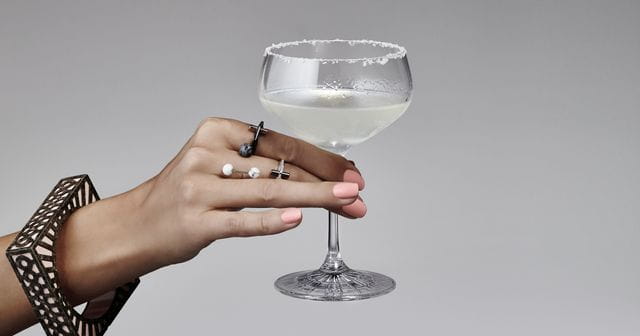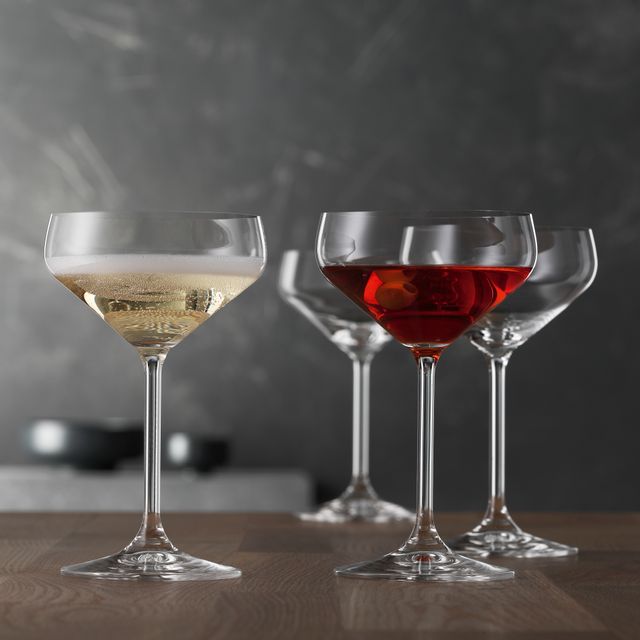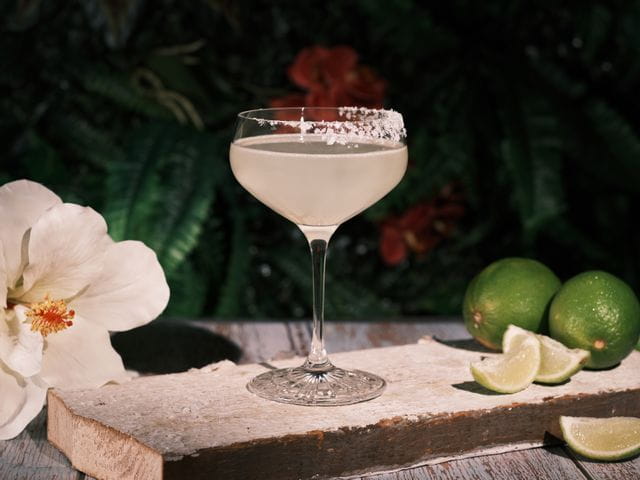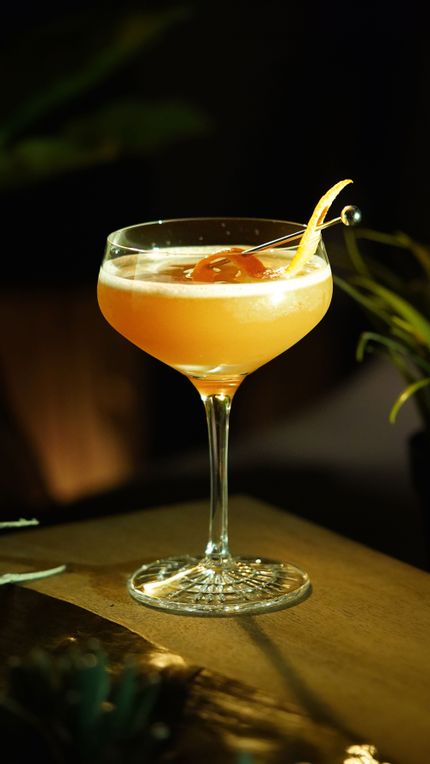From Champagne to cocktails
What is a coupe glass?

Whether for Champagne or cocktails, the coupe glass has long been a darling of the beverage world and is now threatening the Martini glass's position as the top dog among spirit-forward cocktail glasses. Learn about the history of this glass, the function behind its design, and some drink suggestions to enjoy from your coupe.

What is a coupe glass?
A coupe (pronounced koop) is a stemmed glass featuring a shallow, broad bowl with more vertical sides toward the rim. Similarly sized to martini glasses, the coupe glass was traditionally used as a fashionable way of enjoying Champagne but is now commonly used for 'up' cocktails—a type of cocktail that is shaken or stirred with ice but served without. For film buffs, it's the glass Leonardo DiCaprio holds up the camera in the iconic poster for The Great Gatsby.

The history of the coupe glass
The coupe's beginnings
As is often the case for glasses and drinks with histories that go back a long way, there is no absolute consensus on how the coupe glass originated, but there are some fun stories and theories.
A popular myth is that the coupe glass was modeled around the breast of a notable historical female figure. Which female figure exactly depends on the story you hear - some say Madame de Pompadour, some say Marie Antoinette, and even Helen of Troy gets a mention despite being a mythical figure herself. As quirky as these tales are, they can't all be true, and it's widely accepted nowadays that none of them are.
A more credible suggestion is that the coupe glass was invented in Britain! Champagne was first invented in the 17th century and was initially considered a faulty wine in France, but the British were among the first to appreciate Champagne's trademark sparkle, which led to a demand to find a glass to drink it from. The outcome was the coupe glass. True to form, the exact inventor remains unclear, with the most popular suggestions being that the inventor was either glassmaker George Ravenscroft or a friar of the Benedictine order.
Regardless of the inventor, this background explains why coupe glasses, despite being favored for cocktails today, actually began as Champagne vessels. While the French were initially dismissive of Champagne, it gained popularity with French royalty during the 18th century, which launched it into the esteemed sparkling wine it is today. With this, the coupe glass was more widely adopted and became a staple for Champagne enjoyment.
The coupe's decline and renaissance
From here, the coupe enjoyed an extended period of prestige as the glass to enjoy Champagne from, but this all changed in the early to mid-20th century when the Champagne flute emerged. During this time, tastes shifted to prefer more effervescence from Champagne, which was bad news for the coupe. The shape of the coupe glass made Champagne quickly lose its carbonation, whereas the slim, tall design and narrow opening of Champagne flutes helped Champagne retain its trademark fizz for longer. The coupe did enjoy its first success as a cocktail glass during US prohibition - a time when many famous classic cocktails gained popularity. However, this success dwindled as classic cocktails fell out of favor during the Tiki cocktail era when voluminous, fruity cocktails became the go-to drinks for many cocktail lovers.
By the late 20th century, the Coupe glass had diminished considerably in popularity, but it has since experienced a renaissance and repurposing in recent decades. Following a resurgence of interest in classic cocktails, the coupe's charm has captured the imagination of bartenders and cocktail enthusiasts who recognized its ability to enhance the presentation and flavor profile of a wide array of spirit-forward cocktails. Indeed, with a more convenient, functional glass design, many professionals and consumers prefer a coupe glass over a martini glass for their 'up' cocktails.

Beverages for your coupe
As we previously mentioned, the coupe glass lends itself beautifully to an array of cocktails that are shaken or stirred with ice but served without. Here are a few examples of cocktails that shine when served in a coupe glass:
- Sidecar. Invented in Europe around the end of World War I, the Sidecar is one of many classic cocktails to enjoy from a coupe. With its blend of brandy, Cointreau, and lemon juice, the Sidecar is a timeless classic that fits a coupe glass like a glove.
- Martinis might be understandably most closely associated with their namesake glass, but that doesn't mean you have to sip them from a martini glass! Thanks to the coupe glass's elegance and practicality, more and more martinis are being served in them. Give it a try - you might like it better!
- Daiquiris are made with blended ice, making them a little different from other cocktails typically served in a coupe glass. These cocktails are also often seen served in taller cocktail glasses, but as a spirit-forward, rum-based cocktail, they work excellently in a coupe. A versatile cocktail, you can personalize your daiquiri by altering the base fruit—be it strawberry, banana, mango, or various others.
- Margaritas are often served in a rocks glass with ice, but an alternative serving option is to enjoy them 'up' from a coupe glass. Made with a spirit-forward combination of Tequila, triple sec, and fresh lime juice, Margaritas are ideal for a coupe glass, while the glass's wide rim is perfect for a good coating of salt.
- Champagne. What we'd really recommend is using a Champagne wine glass to enhance your Champagne's aromas and flavors while also retaining its effervescence. However, we can't ignore the role of Champagne in coupe heritage, and it's still commonly enjoyed from the glass for celebrations today.
With a Champagne-centric history, a modern-day rebrand has seen the coupe glass develop into one of the world's leading cocktail glasses, exuding an elegance and class that has won the hearts of bartenders and cocktail lovers alike. But hey, if you'd prefer to stick to tradition and use your coupe glass for a bottle of bubbly, be our guest - even if we would prefer to see you use a Champagne wine glass.
SHOP
SPIEGELAU COUPETTE GLASSES
Locations
